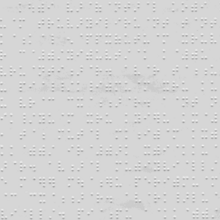
Back ভারতী ব্রেইল Bengali/Bangla Bharati-Brailleschrift German भारती ब्रेल Hindi ಭಾರತಿ ಬ್ರೈಲ್ Kannada Bharati braille Dutch ਭਾਰਤੀ ਬਰੇਲ Punjabi භාරතී බ්රේල් Singhalese பாரதி புடையெழுத்து Tamil
| Bharati braille ⠘⠜⠗⠀⠞⠔⠀⠈⠃⠗⠑⠇ | |
|---|---|
 Sample of Tamil Braille | |
| Script type | |
| Languages | various |
| Related scripts | |
Parent systems | Night writing
|
Child systems | |
Bharati braille (/ˈbɑːrəti/ BAR-ə-tee), or Bharatiya Braille (Hindi: भारती ब्रेल bhāratī brēl IPA: [bʱaːɾət̪iː bɾɛːl] "Indian braille"), is a largely unified braille script for writing the languages of India. When India gained independence, eleven braille scripts were in use, in different parts of the country and for different languages. By 1951, a single national standard had been settled on, Bharati braille, which has since been adopted by Sri Lanka,[1] Nepal, and Bangladesh.[2] There are slight differences in the orthographies for Nepali in India and Nepal, and for Tamil in India and Sri Lanka. There are significant differences in Bengali Braille between India and Bangladesh, with several letters differing. Pakistan has not adopted Bharati braille, so the Urdu Braille of Pakistan is an entirely different alphabet than the Urdu Braille of India, with their commonalities largely due to their common inheritance from English or International Braille. Sinhala Braille largely conforms to other Bharati, but differs significantly toward the end of the alphabet, and is covered in its own article.
Bharati braille alphabets use a 6-dot cell with values based largely on English Braille. Letters are assigned as consistently as possible across the various regional scripts of India as they are transliterated in the Latin script, so that, for example, Hindi, Urdu, Bengali, and English are rendered largely the same in braille.
- ^ With a few inconsistencies in non-native sounds in Sinhala
- ^ "Braille Chapter VI" (PDF). Archived from the original (PDF) on 2013-11-03. Retrieved 2012-08-30.